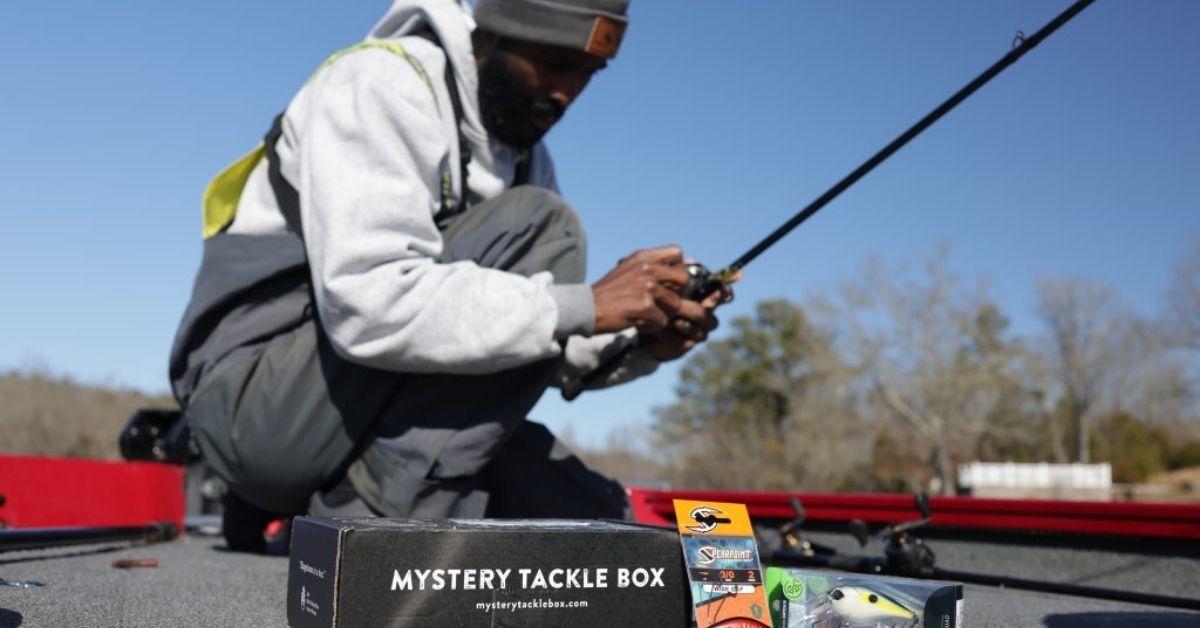Prespawn Bass Fishing Tips: Catch Bass While They're Staging
Daylight hours lengthen and the water begins to warm as winter gradually turns into spring. It's prespawn bass fishing time. During this seasonal transition, bass emerge from their wintertime haunts in search of a spawning site. However, moody early spring weather with its barrage of warm and cold fronts prevent bass from immediately building nests in the shallows. While awaiting the arrival of warmer, stable weather, bass seek a comfort zone somewhere in between their wintertime hangouts and the spawning banks.
You can hit the jackpot by finding one of these prespawn staging areas because the fish tend to stack up there, but the depth and location of these sweet spots differ on various bodies of water.
Here’s a look at how to find prespawn bass on natural lakes, rivers, lowland reservoirs and highland impoundments.
Prespawn Bass Fishing Natural Lakes
A near personal best caught in March from a small Oklahoma pond on a finesse worm
You can head for the bays of glacial lakes to find prespawn largemouth and smallmouth bass. The fish remain in the bays throughout the year and hold in bulrushes or along rocks at depths of 6 to 12 feet deep even during the winter because there isn’t a lot of depth change on these lakes.
A prime prespawn staging area for largemouth bass consists of rock piles in 4 to 5 feet of water that is situated near a vast flat in a bay. Also, locate staging areas along any combination of rocks and aquatic vegetation because bass prefer spawning on the hard bottom close to those spots. There might be an unusually large rock surrounded by patches of grass and weeds, this would be a prime area for a spawning bass to set-up
Smallmouth also stage along the hard-bottom flats in the bays but these fish relate less to cover. Look for a tapering type of bank where smallmouth are kind of moseying their way into the shallows. Smallmouth can be scattered anywhere along the gravel flats, but larger concentrations of bass stage near big boulders or rocks mixed with pea gravel and sand.
Prespawn Bass Fishing Rivers
Gavin Lagle and company with a pair of river bass.
Weedy areas in sloughs serve as prime prespawn bass fishing sites for river bass. The fish will stage on old lily pad stem beds because the vegetation grows on a sandy bottom.
These bass spend winter in deep holes and stage in an area that has light current near a deep hole. Even though prespawn bass stay as shallow as 2 feet in the weeds, these staging fish prefer a location near deep water such as a drop-off or the main river channel.
Siltation limits prime spawning areas on a river so one of the main problems with river systems is finding a hard bottom or a bottom that doesn’t silt over during a flood. So the ideal location for staging river bass is any aquatic vegetation growing between a hard-bottom spawning area and the deep pools in a slough or on the main river.
Spring Bass Fishing Lowland Reservoirs
Brian Latimer picking a prespawn lure from his Mystery Tackle Box
Similar to natural lakes and rivers, these manmade impoundments harbor staging bass in shallow water.
You can locate prespawn staging bass in the feeder creeks of lowland reservoirs. Normally, when the fish are going up the creeks, they pick out the little flat shallow gravel and mixed rock points.
A limited amount of deepwater causes bass to remain shallow throughout the year in flatland reservoirs. So you rarely catch bass deeper than 10 to 12 feet from these waters.
During the winter, lowland impoundment bass seek shelter on the deeper ledges of the creek channel. Prespawn bass move up from the ledges to the sloping secondary points mixed with gravel and rocks where bass stage at depths of 3 to 8 feet. The prime secondary points are those near gravel and sandy banks where the bass eventually move in to build their nests.
Spring Bass Fishing Highland Reservoirs
TightLines TV with a nice largemouth that fell victim to the BioSpawn ExoPod
Major feeder creeks become prime targets in any search for prespawn bass staging on deep, clear highlands reservoirs.
Look for a good prespawn bass fishing point that runs out and has cover, such as cedar trees, pole timber, big boulders, or anything else bass can move up to and stage on. Don’t overlook the cedar trees, any other wood cover, or rocks because that type of cover can draw heat from the sun and any time the fish has the ability to pull up on the cover and get a little heat is a key to catching those staging fish.
Highland reservoir bass also spend their winters in the creek channels, but unlike their lowland impoundment cousins, these staging fish hold deep, sometimes suspending over depths of 15 to 25 feet. Prime staging areas are close to both the pea gravel spawning banks and the wintering spots. A lot of the areas where you catch prespawn staging bass in trees versus bass you catch in the winter might be just yards apart. There are actually some areas where you can be jigging a spoon and catch wintering bass in 30 feet of water and then turn around and throw a suspending stickbait on a shelf to catch staging bass.
Updated March 4th, 2024 at 3:58 AM CT


